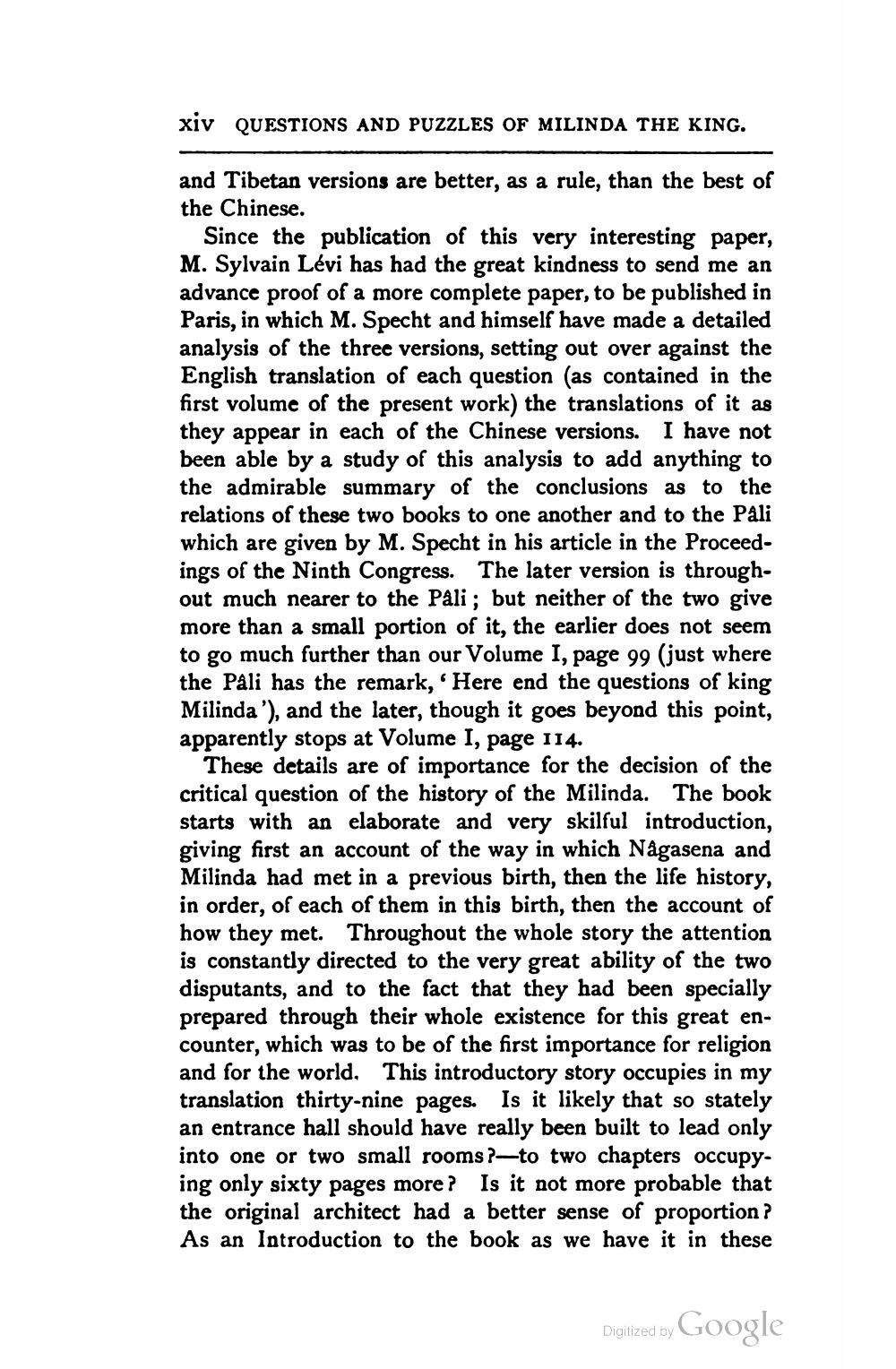________________
xiv QUESTIONS AND PUZZLES OF MILINDA THE KING.
and Tibetan versions are better, as a rule, than the best of the Chinese.
Since the publication of this very interesting paper, M. Sylvain Lévi has had the great kindness to send me an advance proof of a more complete paper, to be published in Paris, in which M. Specht and himself have made a detailed analysis of the three versions, setting out over against the English translation of each question (as contained in the first volume of the present work) the translations of it as they appear in each of the Chinese versions. I have not been able by a study of this analysis to add anything to the admirable summary of the conclusions as to the relations of these two books to one another and to the Pali which are given by M. Specht in his article in the Proceedings of the Ninth Congress. The later version is throughout much nearer to the Pali; but neither of the two give more than a small portion of it, the earlier does not seem to go much further than our Volume I, page 99 (just where the Pali has the remark, 'Here end the questions of king Milinda'), and the later, though it goes beyond this point, apparently stops at Volume I, page 114.
These details are of importance for the decision of the critical question of the history of the Milinda. The book starts with an elaborate and very skilful introduction, giving first an account of the way in which Nagasena and Milinda had met in a previous birth, then the life history, in order, of each of them in this birth, then the account of how they met. Throughout the whole story the attention is constantly directed to the very great ability of the two disputants, and to the fact that they had been specially prepared through their whole existence for this great encounter, which was to be of the first importance for religion and for the world. This introductory story occupies in my translation thirty-nine pages. Is it likely that so stately an entrance hall should have really been built to lead only into one or two small rooms 2-to two chapters occupying only sixty pages more? Is it not more probable that the original architect had a better sense of proportion? As an Introduction to the book as we have it in these
Digitized by Google




